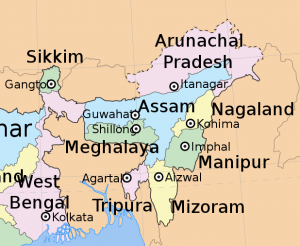
Budget 2023 needs to address several issues holistically. This budget is politically important as this is last full budget before the general election next year. For obvious reasons, the government would like to use its policy range to garner electoral support. However, the overall economic environment might not be conducive for a populist budget as the economy is still to come out of the Covid-induced crisis.
The growth had slowed down in the pre-Covid period itself. Signs of economic stagnation were visible since 2016 and Covid-19 dealt a heavy blow. However, compared with the economic downswing in the rest of world, India managed its economy reasonably well during the pandemic, thanks to primary sector resilience.
The challenge before the government in the context of Budget 2023 is to balance populism and revive GDP growth. There are economic constraints such as the need for tightening monetary policy and controlling fiscal deficit. Squeezing in populist steps would need a lot of balancing and manoeuvring. Given the limitations on the monetary front, it is apparent that the focus would be on the fiscal side. Nonetheless, the trend of focussing on CAPEX as seen in the previous budgets would continue.
READ I Budget 2023: Rationalise direct taxes to boost growth
Budget 2023 may prioritise infrastructure
Spending on infrastructure with its multiple linkages has been a priority for the Narendra Modi government and there might not be any change this year. A clearer route map for infrastructure financing may be on the anvil and guidelines particularly for asset monetisation may be considered. Railway infrastructure needs to be widened further, in particular.
The immensely promising performance linked incentive (PLI) scheme is likely to be expanded further in the backdrop of the Atmanirbhar Bharat initiative. The MSME sector needs the government’s attention as always, since the sector has huge employment potential. In the post-Covid period, there is a global apprehension and discomfort about the sustainability of manufacturing activities in China.
India may gain because of this. However, that depends on how India can reinvent its economic policies to attract foreign manufacturing giants to set up base in India. Attracting foreign direct investment in manufacturing and making the global value chain to invest in India are the major objectives as far as India is concerned.
In an effort to attract foreign investment and boost the capital market, this budget may consider relaxation in the tax rules for investment in start-ups. How does Budget 2023 address the financial sector woes is also an area of interest, particularly in the context of the proposed privatisation of certain public sector banks. Also, the insurance sector needs attention, particularly relating to health and general insurance issues. The aspect of agricultural insurance is also an area of interest for many, given the fact that 42% of the labour force is still engaged in agriculture.
READ I Budget 2023: Focus on clean energy and climate change
Also, certain clarifications are overdue with regard to cryptocurrencies and other virtual digital assets (DGA) as the size and scope of these markets have been increasing across the country.
The financial sector can be given a fillip with relaxations of the general taxation rules. In all probability, rationalisation of the GST rates for several commodities are likely to be in the pipeline. Moreover, the direct tax regime, particularly the income tax ecosystem, needs to be taken up in this budget on a priority basis. The income tax rates urgently need a revision as do the slabs. The deductions and exemptions provided also require an overhauling.
Increasing the limits for Public Provident Fund and alike would increase the savings rate as well as provide greater funds to the government for public investment. Investments in capital market can be further linked to tax benefits and alike, which in one hand will make the salaried and the middle class happy and, on the other, incentivise investment.
Agriculture remains the mainstay of our economy in terms of food security and employment. Irrigation needs persistent support and it is expected that necessary provisions would be made in Budget 2023. The demand for greater MGNREGA allocation was experienced in the last couple of years and Covid-19 further intensified the demand for this employment guarantee provision. Thus, a greater budgetary allocation for MGNREGA is expected.
The social sector spending by the government is very important from the aggregate demand perspective as it helps maintain the purchasing power of the masses in the face of increasing inflation and unemployment. India’s social sector spending is way too low compared with other emerging economies. The budget must address this matter and give a fillip to social sector spending. This becomes further relevant as this is the last budget before the general election of 2024.
The Budget will be interesting in its approach to merit goods. The National Education Policy is likely to be adopted in many parts of the country from July 2023 and the government may link up some support mechanisms for the institutions/ agencies adapting to it in the earlier phases. With the opening up of the education sector for foreign universities, it would be interesting to see the developments in this sector.
India still lags when it comes to gender parity. Gender wage gaps persist and the female labour force participation rate is precariously low. Budget 2023-24 must allocate funds for greater female labour force participation, skill development and self-defence training at schools.
Budget and the northeast
The Union budget is important for the smaller and special category states, as they depend heavily on central funds. The North-Eastern states with very low revenue generation capacity and limited fiscal strength insist on special funds for development. The Budget of 2022-23 provisioned for PM-DevINE scheme and something similar in the next budget is also expected, particularly as three states namely Tripura, Nagaland and Meghalaya are going for assembly polls in February 2023 itself.
Infrastructure projects in the NER have received a huge boost in the last few years and physical connectivity in the form of airways and railways has increased manifold. The importance of the region is not just for strategic causes but also for being the base for the implementation of the Look East Policy.

The bilateral trade with Myanmar and Bangladesh is expected to grow further through the Integrated Check Posts and Land Customs Stations of the region as Covid-related restrictions are being withdrawn gradually and thus support to the Land Port Authority of India continues to be important for the region. This is particularly important as the Maitree Setu linking India’s Sabroom at Tripura with Ramgarh in Bangladesh, even though completed in 2020, is yet to be made functional. Necessary budgetary support will expedite the process.
The Agartala- Akhaura rail corridor is still under construction and budgetary support is expected here also. Border Haats in Tripura and Meghalaya have been successful in the past as those provided boost for the local economy. There is a demand for more such border Haats and Budget 2023-24 can make positive contribution in this respect too.
Tourism is considered to be of immense potential for the NER and the footfalls in the region have been increasing in the post COVID period. With the introduction of the UDAAN scheme, several airports in the region have become functional. There has been growth in the hospitality infrastructure too, and this leads towards expectation for a state-of the art skill-training institute dedicated for the hospitality sector in the region.
Such a wish list stems from the fact that many youth from the region are doing very well in this service sector all over the country and abroad. However, facilitating intra-regional connectivity can be explored further, which will enable the travel and tourism sector to introduce packaged tours covering more places of interest.
Dedicated tourist circuits covering more states can be explored. Additionally, better intra-regional connectivity will boost both tourism and intra-regional trade. Hopefully, Budget 2023-24 will take note of these possibilities and provide allocation accordingly. Moreover, several people from Bangladesh also use the region, particularly Agartala, as a transit point for moving to other parts of India, especially for medical purposes.
Similarly, several patients from Myanmar come to Manipur for medical purposes. Health infrastructure in the region, particularly, a super-speciality medical institute can be considered which will also have its trickle-down effect. Further, the region with its relatively favourable climate across the year can emerge as a wellness destination. Some kind of incentive for such activities in the region can be offered in the Budget 2023-24.
A railway wagon or locomotive coach factory at Tripura will provide immense boost for the economy of the state. It will also address the issue of growing unemployment in the region. With better broad-gauge connectivity and opening up of the Chittagong port via Sabroom, the state is poised to be the gateway to the region, and the demand for railway services is bound to increase. Such a unit here will boost employment and will augur well for exports of products to Bangladesh and other East Asian countries.
(Dr Indraneel Bhowmik is Professor and Head, Economics Department, Tripura University, Agartala. Dr Kingshuk Sarkar is Area Chair and Associate Professor at the Goa Institute of Management, Goa.)
Dr Kingshuk Sarkar is an associate professor at the Goa Institute of Management. He has worked as a labour administrator with the government of West Bengal. He earlier served as a faculty member at VV Giri National Labour Institute, Noida and NIRD, Hyderabad. Views expressed are personal.


